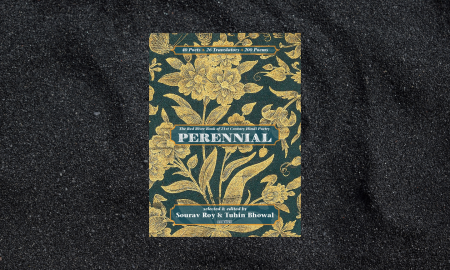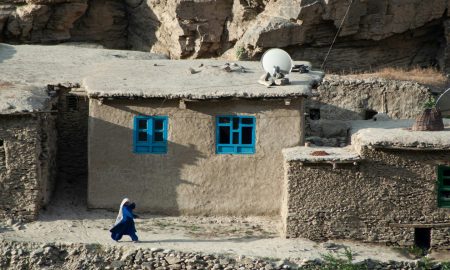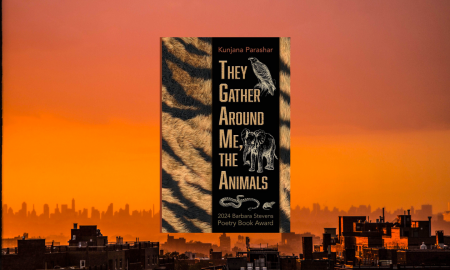What It Means to be White
The first impression I make on paper via my name – Alicia Wyneken – is that I must be white. Alicia is a variant of Alice’s Germanic name, “noble.” Yet, my Mom chose it as she hoped for a little girl that would look like Alice from Alice in Wonderland, a girl with curly blond hair and blue eyes like the ones depicted in the Disney movies, not novels. I was born with blue eyes, only blue eyes. Wyneken is a Germanic last name associated with the Lutheran missionaries in the United States. According to my name, I must be a white woman of German-American descent. My maiden name Ristau also originates from Germany. And, yes, I am all those things, at least in part. I assume that all people see white skin and white ancestry, even if it is only part of who I am.
The white name and the white skin come from my father. He was not in our lives much, and when he was, they were not positive experiences. There was abuse, and there was trauma. He had two daughters, and I was one of them, both of us from different cultures on our mothers’ sides. My sister’s Mom is Hispanic, and my Mom is French. Our father never respected women. They were property he used and disposed of when done and bored. He violated my Mom, and I know I am a product of that act of violence and hate. I don’t know about my sister. When I look at myself in a mirror, I see that white skin – my father’s white skin. So many times, I wanted to punch the mirror and break the glass, the reflection.
I grew up in France, away from my father, yet my skin was always a reminder of my Mom’s trauma. “You look like your father” was a phrase I heard too many times. My Mom was from Nice, a city by the Mediterranean Sea. Nice is a port town, meaning it was a fishing, trade, and mixed culture for centuries. How one identifies racially is complicated, but the people of Nice tend to have golden brown skin. There are the French, the Nissarts (several generations of people who lived in Nice – the longer, the better), the Romanos, the Algerians, the Tunisiens… and the list goes on. The Mediterranean ones are usually a few generations of ancestors from the region and a mixed ethnic line.
With my white skin, I did not fit in with my family and their Mediterranean brown skin. I did not work with my classmates either. After a mixed-colored candy, I was either the “dirty American” or the “tutti frutti.” I was bullied for many years. My Grandfather would say, “Ne pleur pas! Tu dois avoir une peau dure, “Don’t cry! You need strong skin.” My family tried to make me darker by putting me under the sun, which did nothing but burn my skin and eventually trigger vitiligo. I hated my white skin for the reminders of my father’s sins and the reminders of the white sins in the world. I hated it even more, especially since the pigmentation was not clear. I was angry and even more confused. Am I white, French, Mediterranean, American, or nothing? And what does it all mean?
I grew up in various areas of Nice, not all of which were good neighborhoods, and some were dangerous places to live. I remember walking home from school and coming across burnt-down cars and black dust on the pavement, which clung to my shoes. It was not the most dangerous neighborhood; it was the third one. It smelt like urine and uncleaned fish from the street market. The city hosed down the main streets in the town after a market, but not ours. I once saw a rat bigger than a cat, or so I remember. Drugs were available at street corners, and kids had the right to purchase alcohol. All we had to say was, “it’s for my Mom.” It was easy. Different country, different city, different streets, different rules. I never was pressured to take drugs or other substances. They sold their merchandise to other neighborhoods. I was left alone, and I learned to be invisible. It was a survival tool. “Don’t say anything. Don’t do anything. Just walk,” I told myself. “If you don’t look… you don’t see.”
Each neighborhood had its own culture and heritage. There were the all-white and upper-class and middle-class neighborhoods and the others… the others mainly were Asian, Middle Eastern, and Romano… until the government decided to mix them a little, thinking it would strengthen communities. It created more tensions; more cars were burnt, and more fights occurred. More red on the concrete pavement and white body-chalk drawings on the streets we walked.
I took refuge frequently at my Godmother’s restaurant. My Mom said she was Chinese, but according to the immigration history trans of the period, she might have been from Vietnam instead. She went by the name Marie, and I never knew her birth name. I don’t think her husband knew either (he was white). The kitchen was small, and fried rice was always on the stove. I could see the steam emanating from the pots, invading the room with a giant cloud. I just watched her cook, and it smelt like fried chicken, steamed vegetables, and nuoc mam (we used it on everything like Soy Sauce in the United States). I ate fried rice right there at one of her restaurant tables. I can still picture the black leather seats and the red wooden dragons on the sides. My Mom and I were poor, and one day, my Godmother donated one of her restaurant chairs to use when I studied at night and did my homework. When I feel down about the world, acts of racism, microaggressions, and hate, I cook some fried rice and think about my Godmother’s restaurant. I miss her.
It “sucks” to be white on the outside and feel like something else inside, never really belonging, wanting to be invisible so as not to bother anyone. In this time of white privilege acknowledgment, I might be discouraged to say “it sucks,” yet I am ashamed as a white person, a white French individual, a white Mediterranean, or a white American. I cannot deny the color of my skin. As a white person, I am aware of my skin’s harm to others. I am aware, and here I am, writing my confessions and my testimony on why I am a co-conspirator in this fight against racism. I am aware that my struggles were real but not based on the same pain due to my skin color. When I speak to advocate for equity, I frequently must explain why I am present.
“What is my place?” I often ask myself. For example, during Black Lives Matter discussions, “Why are you here? Why does it matter to you? Let them deal with their problems” are just a few questions and comments I hear. “Because I care. Because it is not ‘their’ problem. It is ‘our’ problem. It makes it ‘my’ problem.” I am only one person. I do not represent the white community. I am not even the stereotypical white woman. White skin triggers trauma in people of color, and for a good reason. The dominant culture of high-class white men has not done justice to its population. People of color are no longer in the minority in numbers, but they still are when it comes to accessing power.
I have to assume the white skin on the outside, and there is no denying it. I feel the Middle-Eastern and Romano blood boiling through my veins on the inside. I think my heartbeat is drumming to the music of my Godmother’s pots in her restaurant kitchen. I taste the olive oil on my tongue, a Mediterranean delicacy. I see skin-colored crayons of all hues in the school supplies aisle at the grocery store. And I remember the day one of my Latina daughters destroyed her brown skin doll, saying, “She is ugly … just like me.” The day we all sat down and drew our family members on paper, my children asked why I drew a sister next to me and why I drew myself as white and brown. I had to confess to my children, not a secret, but painful truth about my family.
What It Means to be a White Sister
My sister had a different life than mine. She lived with her Latina mother, and I lived with my French mother. We lived apart in other parts of the world. She knew about me, and I did not know about her. She was a dark secret for decades. To her, I was the privileged white girl. My father abandoned her and her Mom. My mother and I ran away.
When we found out about each other, we each envied the other. She ached for a relationship with my father, whereas I envied her lack of ties with him. We each tattooed feathers on the back of our shoulders as a link to each other, then we separated again, our tattoos left behind.
She wanted a father’s hug, and I had a father’s fists.
She wanted a father’s encouragement. I had screams.
She wanted a father’s gifts underneath a tree. My puppies were thrown in a trash bin when I was four.
Smashed TV, broken fish tank, broken glass, flooded room, dollar bills torn apart, full grocery bags thrown at my face, belt, my summers with my father. Once, he dunked my head in a full bathtub. I was fourteen, and I thought that was it. I looked at the white texture of the bathtub, and the fish stuck at the bottom started to swim. I counted their tails moving each time I dunked in and out, bubbles covering my face. I counted many things. I was good at math.
I traveled across oceans for a fist. For words of disempowerment that overwhelmed my mind with migraines. I didn’t care. I counted the days to the end of the summer. I counted the days to college. I touched the ground many times, tears touching many surfaces; I counted the drops and looked inside their transparent bubbles. They were places to hide. Time did not exist inside a bubble.
My sister wanted an American Dream, the white girls’ lives pictured in television and books. I never wanted to share my life or gift it. I wanted to be like her, connected to her family and her other sisters. They lived the closed-bonded Latina family lifestyle. I was invited once, but never again. My skin hurt her too much; she said so. It reminded her of what she did not have. It reminded her of “white privilege.” I never told her what I lived, the fist, the screams, the deaths, but her mother knew and sensed it, like a smell coming out of my veins. My sister deserved to have a dream. That is the gift I wanted her to have. I went to college, and I had a good life. She ached for those opportunities that I had. I was never told that I could not do it; instead, I was encouraged to do it… to get out and be free. I had mentors by my side, wiping down my tears and helping me all the way. My sister was alone, without mentors. She had a family. I had mentors.
I wanted to share; she pushed me away.
I wanted to lift her, but she did not want my hand; instead, she wanted our father’s white hand.
I wanted to hug her; she wanted our father to hug her.
I was not wanted, and I was almost gone once. But here I am.
What It Means to be a White Mother
I have a Latina sister and niece, yet I did not expect my life to draw me into the Latina/o/x culture for years, making mine a family of seven. They were full siblings, older than the average adoption age range, but their personalities and interests matched our own: their passion for Legos, Disney, and Marvel Movies helped us connect. They are also Latina/o/x. I embarked on a different cultural journey. I didn’t know if their roots were Mexican, Guatemalan, Puerto Rican, etc. – just the big Latina/o/x umbrella. We enrolled them in Spanish tutoring, participated in Cinco De Mayo and Day of the Dead celebrations, shopped at Vallarta, and ate various Latina/o/x foods. It wasn’t enough.
Quickly my children became book lovers and seemed to adapt to our family’s lifestyle. We added activities of their choice, attended church, and thought we would be the “perfect American family” with love and patience. This is where we had it all wrong. What is the “perfect American family?” The Brady Bunch? We were named the “Wyneken Bunch.” Yet, our family did not look like one featured on TV. We were a blended family with various cultures, traumas, and special needs.
I realized that the children needed a sense of identity and belonging aside from our family nucleus. We incorporated as many Latina/o/x cultural elements into our lifestyle as possible. The kids attended a primarily Latina/o/x-based neighborhood school; we shopped at Vallarta semi-regularly, included Latina/o/x meals, and found a Spanish tutor. We wanted our children to be proud of their heritage. When Thanksgiving came, we designed it as a multicultural Holiday to honor everyone in the family, our friends, and our neighbors.
I special ordered skin-colored crayons before they were a popular item. My oldest son discussed the possibility of taking a DNA test to know his family heritage for one of his 3rd-grade family culture assignments. He created a poster board with one half showing his adoptive family’s cultural heritage and the other half showing his Latino/a heritage, with many question marks. I supported him and lifted him through this process. We researched and learned together, but question marks still dominated his poster. It is those question marks that penetrated my heart like arrows.
My oldest son assimilated more and more into my culture and even self-identified as French for a while. I even took most of the family to France to visit the land I come from, the village where my great-grandparents lived, and many generations roamed around the ruins and ancient streets, some remains even dating from the Roman Empire. They felt the history. They felt the connection to the history – not a relationship to their heritage but to the heritage of their adoptive family.
They struggled with the color of their skin and why mine was different than theirs and different from the customers at Vallarta. My second oldest identified as “white” and refused Spanish tutoring lessons. As our children dealt with their traumas, they associated their traumas with their cultures, and they started to deny their origins and cultural heritage, which came with their birth families. They were in the foster system for a while, with few families, some Latina/o/x, some unknown. They never had a chance to associate with their culture and past with love and respect. Some associated Latina/o/x music with sirens, police officers, gunshots, gangs… some of their cultural heritage became triggers to trauma, and they began to disassociate from their roots, making it challenging to build positive self-esteem and a positive sense of identity.
Our children struggled with the color of their skin, even amongst their classmates, primarily Latina/o/x, in our neighborhood school. We wanted our kids to grow up in a neighborhood that reflected their culture so that they could have a sense of community. Our kids looked at our skin – white – and their skin – brown – and wondered why they were different. “We are all different and beautiful,” I replied each time. But kids are perceptive and know the answer is not good enough.
“Are all brown skin people in gangs?”
“No, sweetie,” I answered.
“Well, I am white,” one of my children once exclaimed.
“No, you are not. You are Latino and beautiful.”
“I want blond hair.”
“I hate my skin. It’s ugly.”
All but a few words, tears, and screams heard in our household, enough to bring a mother down to her knees and, with untactful words, try to comfort her children’s hearts: “You are beautiful. Society makes you think white skin is better by what you see on TV and in books… but it is not true, and it is a false image. Do you think Selena is pretty? Do you like her music? Your culture is rich and filled with wonder.”
In our home, we explored the various countries in South America. We watched a TV show on the differences between tacos throughout South America and the United States. We spoke about the Incas and the Mayans. We talked about colonialism, all in an age-appropriate context. We took our children to visit museums and missions in Southern California to learn history and earn awareness not only of their generational trauma but generational, cultural wealth. It was not enough.
We taught our kids not to wear hoodies and certain outfits for fear that people would perceive them as being part of a gang or up to no good. We taught our children how to react toward police officers or how not to respond. We talked about the news and related to them, even when it was difficult. We marched and stood with them at rallies to support immigrant families and children. Our children cared for this cause. We sat in rooms filled with Latina/o/x people even when uncomfortable celebrating friends’ birthdays or attending parties. It was not enough. Our children did not embrace their identities, and they were resistant, and they are still resistant.
What It Means to be a White Scholar
Here I am researching and writing about Latina/o Foster Youth to discover which cultural wealth and capitals are resistant through multiple moves and which ones dissipate via assimilation to foster families’ cultures.
Here I am assisting in teaching a diversity class embracing the values of a mindfulness democratic pedagogy.
Here I am trying to speak for equity, engaging readers and students to think beyond what they are broadcasted, what the educational system printed in textbooks, what systems tell them is right or wrong.
Here I am questioning my identity, my place in this journey of truth and knowledge.
Here I am, a white woman, a white Mom, a white sister, and a white scholar.
Here I am.
Confessions of a White Co-conspirator
Here I am trying to be a co-conspirator in the fight against racism.
Here I am decades after events that shook my heart and made me who I am today as a white individual, sister, and Mom. As a toddler, my father pulled me away from my friends because they were Black. We were only playing outside my grandmother’s home. I was too young to understand, but my heart felt pain. I imagine my friends were hurt as well. That was not my moment of truth, but it gave me a key to understanding future events.
When I was a teen, I attended a summer camp in France. My mother thought it would be a good idea as it was advertised as an inclusive camp run by religious groups—poor kids with scholarships and rich kids mixed for summer fun activities. It was only inclusive on paper. We were lodged in different parts of the camp, and kids of color were separated from white children. The adults said it was due to a lack of dorm rooms, but we could count, and when one comes from an at-risk neighborhood, there are things that we already know, such as segregation. We may not have the vocabulary, but we know the pain.
We snuck out and played with one another at night anyway; breaking rules was our second nature. I made friends with the two Black girls (in France, so they were not African American). One afternoon, they were playing and talking with me in my dorm room when the door opened, and the light turned off, but we could recognize the boy who entered the room. He was one of the rich kids. The room was filled with silence; my friends and I looked at each other; we did not move or say anything. He sat in between my friends and me. He asked me to slap them and repetitively say “salle Noire,” and if I would not do it, he threatened to hurt me. We all knew what he meant. He was known for his actions, but no one did anything about it. It was sanctioned silence. I stared at one of my friends, and she slightly nodded in agreement as if sacrificing herself as a deer does to a hunter. I did not cry, not yet, and neither did my friends. After a while, I was asked to leave the room and leave them alone. I was not a good friend. I sacrificed their lives for mine. I did not stand up even though I knew better. We never spoke to each other during the remaining time of the summer camp. We just stared at one another from a distance. My heart and soul were tainted, a moment permanently engraved in all facets of my being, always afraid of an exposed truth: I let it happen.
Here I am. I lost my friends. I lost myself.
Here I am. For decades, I saw flashbacks.
Here I am. I am not looking for redemption. It is too late.
Here I am. I am white woman with a dark story.
Never, again.
Here I am.





